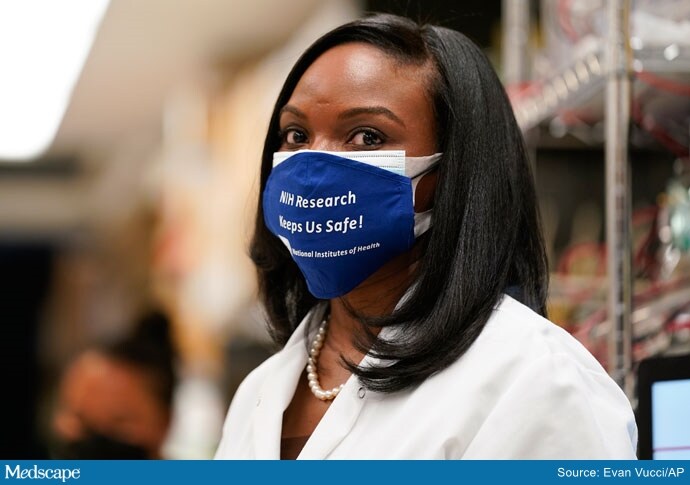Editor’s note: Find the latest COVID-19 news and guidance in Medscape’s Coronavirus Resource Center.

Kizzmekia Corbett looks on at the Viral Pathogenesis Laboratory at the NIH in Bethesda, Maryland.
The US government scientist who helped design one of the first COVID-19 vaccines and then tackled skepticism of the shots in communities of color is moving to Harvard in June.
Kizzmekia Corbett of the National Institutes of Health will take her research into next-generation vaccines for coronaviruses to the Harvard T.H. Chan School of Public Health, the school was set to announce Tuesday.
Corbett told The Associated Press the move also allows her to become even more involved in vaccine outreach and equity.
“I’ve basically spent the last year, I guess, fighting against misinformation” about the COVID-19 vaccines, she said. “We think that we can just say, ‘The science is good,’ and people are going to say, ‘OK, yeah, I’ll take the vaccine,'” when their questions instead need greater attention.
Corbett, 35, helped lead the NIH’s development of the COVID-19 vaccine made by Moderna. The viral immunologist spent six years leading an NIH research team that studied potential vaccines against other coronaviruses such as MERS, giving them a head start when the new coronavirus appeared.
As vaccination drives launched, Corbett spoke virtually to churches and at forums hosted by colleges, doctors and even basketball great Kareem Abdul-Jabbar to counter vaccine reluctance.
In her new role, Corbett will head a lab that explores new vaccines to protect against additional members of the coronavirus family and other novel viruses that could threaten human health.
“We’re going to continue to see these emerging viruses and have to have strategies to deal with them,” said Sarah Fortune, the chair of immunology and infectious diseases at the Harvard Chan School. “Unfortunately with coronaviruses and the need to understand how to vaccinate against coronaviruses, we’re not out of the woods.”
The Associated Press Health and Science Department receives support from the Howard Hughes Medical Institute’s Department of Science Education. The AP is solely responsible for all content.
Source: Read Full Article



